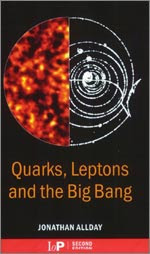
This book provides a comprehensive overview of modern particle physics accessible to anyone with a true passion for wanting to know how the universe works. We are introduced to the known particles of the world we live in. An elegant explanation of quantum mechanics and relativity paves the way for an understanding of the laws that govern particle physics. These laws are put into action in the world of accelerators, colliders and detectors found at institutions such as CERN and Fermilab that are in the forefront of technical innovation. Real world and theory meet using Feynman diagrams to solve the problems of infinities and deduce the need for the Higgs boson.
Facts and Mysteries in Elementary Particle Physics offers an incredible insight from an eyewitness and participant in some of the greatest discoveries in 20th century science. From Einstein's theory of relativity to the elusive Higgs particle, this book will fascinate and educate anyone interested in the world of quarks, leptons and gauge theories.





+3+edition.jpg)

































.jpg)








